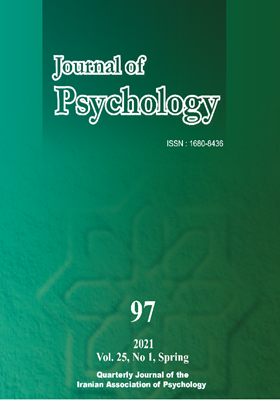-
-
List of Articles
-
Open Access Article
1 - The Features of Emerging Adulthood Developmental Stage in Iranian University Students: Culture and Gender
Mohamad-Ali Naghizade Narjes Lari Elahe Hejazi Keyvan Salehi -
Open Access Article
2 - Relationship between Moral Conscientiousness and Achievement Goal: The Mediating Locus of Control
Mohsen Arbezi Farhad Khormai -
Open Access Article
3 - Explain the Mindfulness Based on Emotion Regulation and Behavioral Inhibition-Activation Systems in University Students
Ali Nozari Mehran Farhadi Mosayeb Yarmohamadi-Vasel -
Open Access Article
4 - The Investigating the Factor Structure and Psychometric Characteristics of Extramarital Affairs Proneness Scale in Females
Nasim Zafargholizadeh Ali khademi Reza Tasbihsazan-Mashhadi -
Open Access Article
5 - Model of Contrast Avoidance of Generalized Anxiety Disorder in People with Symptoms of Generalized Anxiety Disorder
Masumeh Shafiei فاطمه رضایی Masoud Sadeghi -
Open Access Article
6 - Explaining Theoretical Foundations and Practical Application of “Systemic Behavior Modifying Technique”: Providing a New Technique in Counseling and Psychotherapy
Mohammad Khodayarifard Mohammad Hassan Asayesh -
Open Access Article
7 - The Relevance of Child’s Attitude toward Father and Borderline Personality Organization: The Mediator of Object Relations
Behnaz Abasi-Rad NADER MONIRPOOR Hasan Mirza-Hoseini
-
The rights to this website are owned by the Raimag Press Management System.
Copyright © 2017-2026







